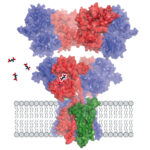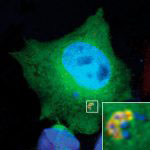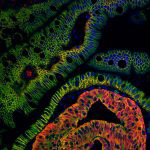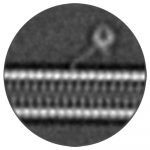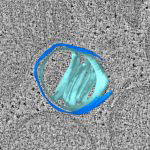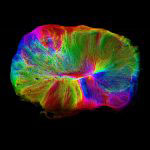
Cerebral organoids, also sometimes called mini-brains or brain organoids, have become an important and useful tool in understanding human brain development and disease. They have the potential to model brain functions, such as information transfer between neurons, but restrictions in their growth have so far limited this. Now, Madeline Lancaster’s group in the LMB’s Cell Biology Division, have for the first time demonstrated that cerebral organoids can direct muscle movement.
